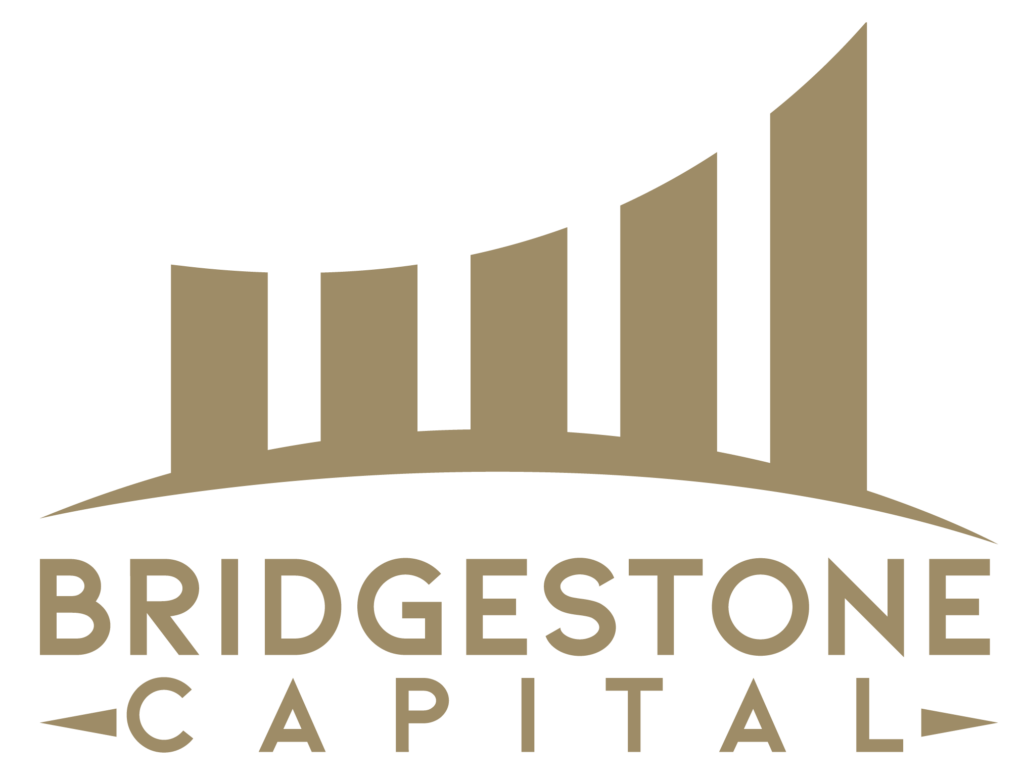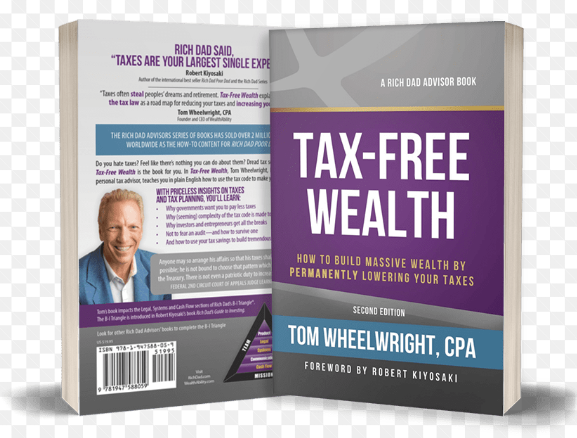Estimated reading time: 6 minutes
Table of contents
Introduction
Embarking on the journey of retirement planning is akin to navigating uncharted waters. The seas are rife with various books and resources offering strategies to minimize expenses, but few provide the depth and insight found in “Tax-Free Wealth” by Tom Wheelwright. This invaluable guide unveils the basic principles of leveraging the country’s tax laws to not only safeguard your hard-earned income but also pave the way for a prosperous retirement.
In the realm of personal finance, the old adage holds true: “Taxes are your largest single expense.” As high-income earners, the burden of taxes looms large, making it imperative to comprehend the intricacies of the tax code. “Tax-Free Wealth,” a masterpiece from the Rich Dad advisors series, authored by Tom Wheelwright, proves to be an indispensable resource for those seeking financial independence.
The Cashflow Quadrant
At the heart of “Tax-Free Wealth” lies the elucidation of the Cashflow Quadrant, a concept integral to understanding tax planning concepts. Tom Wheelwright, a key member of the Rich Dad advisors and a seasoned CPA, unravels the four distinct quadrants that categorize individuals based on their income sources: Employee (E), Self-Employed (S), Business Owner (B), and Investor (I).
For informational purposes, let’s delve into the intricacies of these quadrants. An Employee trades time for a paycheck, subject to regular income tax. Self-Employed individuals, such as doctors or contractors, though enjoying independence, may miss out on tax savings available to business owners. Business Owners, the architects of systems, can create passive income and leverage the country’s tax laws to their advantage. Finally, Investors, those accumulating wealth through assets like real estate, benefit from tax breaks structured smartly.
Understanding this Cashflow Quadrant is not merely about categorization; it is a gateway to minimizing tax penalties and optimizing tax advantages. As “Tax-Free Wealth” asserts, the tax code is not an obstacle but rather a set of rules designed to encourage specific economic behaviors. Business owners and real estate investors, for instance, are granted tax breaks as a stimulus for job creation and economic growth.
Stay tuned as we explore further key ideas from “Tax-Free Wealth,” providing you with insights on how to navigate the complex landscape of the country’s tax laws, ensuring you don’t merely comply with regulatory requirements but wield the tax code to your advantage in particular situations.
Key Ideas from “Tax-Free Wealth”
Tax Laws Encourage Business and Investment
Delving into the pages of “Tax-Free Wealth,” one encounters a pivotal revelation: our country’s tax laws are not just regulatory requirements but strategic mechanisms aimed at stimulating economic growth. Tom Wheelwright intricately explores the notion that tax laws are structured to provide an unfair advantage to those who actively contribute to the economy through entrepreneurship and investment.
In the world of personal finance, the rich get richer not solely due to their income but because they understand the game—the game of leveraging the tax code. The book emphasizes that about 95% of the tax code is strategically designed to encourage citizens to embark on entrepreneurial ventures or invest their money wisely.
Real Estate Is a Massive Tax Shelter
One of the standout chapters in “Tax-Free Wealth” unveils real estate investments as the country’s most significant legal tax shelter. Here, Wheelwright provides a roadmap for transforming rental properties into wealth-generating assets. The basic principle is clear: by putting your money into real estate, you unlock various tax breaks.
In the realm of personal finance, understanding the tax advantages of real estate investments is akin to holding a key to a treasure chest. Depreciation of assets, capital gains tax benefits, and the allure of earning passive income through rental properties are among the avenues through which vast wealth can be accumulated. As the book posits, real estate offers not only financial security but also serves as a cornerstone for achieving long-term financial independence.
Most of the Tax Code Stimulates Growth
Contrary to common belief, the tax code is not an obstacle designed to burden citizens but rather a strategic tool encouraging growth. “Tax-Free Wealth” contends that a staggering 95% of the tax code is intricately woven to stimulate economic growth. Entrepreneurs and investors, categorized in the Business Owner and Investor quadrants, are granted tax breaks as an incentive for creating jobs, fostering real estate development, and ultimately propelling economic prosperity.
Understanding this fundamental aspect of the tax code empowers individuals to position themselves strategically within the Cashflow Quadrant. As we continue our exploration of “Tax-Free Wealth,” we will uncover more insights into how you can align your financial strategies with the regulatory requirements, ensuring your own tax becomes a tool for building wealth rather than a mere obligation. Stay tuned for the next installment, where we will delve into re-evaluating your retirement strategy with taxes in mind.
[divi_switch_layout id=”1311″]
Re-Evaluate Your Retirement With Taxes in Mind
As we navigate through the teachings of “Tax-Free Wealth” by Tom Wheelwright, it becomes evident that securing a comfortable retirement involves more than traditional savings. The book urges readers to re-evaluate their retirement strategy, emphasizing the significance of tax planning in this pivotal phase of life.
Understanding the Tax Burden in Retirement
The journey toward retirement often culminates in a transition from active income to reliance on retirement accounts. However, what many individuals overlook is the substantial tax burden that accompanies traditional retirement income methods. As Wheelwright aptly notes, taxes on retirement income can be significant, posing a potential threat to the financial security retirees aim to achieve.
Shifting Away from Traditional Approaches
“Tax-Free Wealth” challenges the conventional wisdom surrounding retirement planning and advocates for a paradigm shift. Instead of solely focusing on the total sum saved, the book encourages readers to pay careful attention to after-tax income. By strategically maneuvering away from traditional approaches and developing a unique strategy tailored to individual needs, one can potentially reduce tax liabilities and optimize financial outcomes.
Embracing Long-Term Planning
The path to tax-free wealth in retirement involves embracing long-term planning. Wheelwright suggests a departure from the mindset of solely accumulating wealth to one that prioritizes after-tax income. This shift requires meticulous consideration of tax planning concepts and a commitment to optimizing financial strategies over the long haul.
Key Takeaways for Tax-Advantaged Retirement
As we unravel the complexities of tax-free wealth in retirement, “Tax-Free Wealth” provides actionable insights:
- Maximize Tax-Advantaged Accounts: Contribute as much as possible to tax-advantaged retirement accounts like 401(k)s, IRAs, and HSAs. These accounts offer a strategic avenue for minimizing tax obligations.
- Invest in Tax-Advantaged Assets: Allocate investments wisely, focusing on tax-advantaged assets such as municipal bonds, REITs, and growth stocks. This approach aligns with the basic principle that certain investments come with built-in tax advantages.
- Strategic Management of Income and Expenses: Managing income and expenses strategically is key to qualifying for tax deductions and credits. “Tax-Free Wealth” provides a roadmap for navigating the tax landscape with intentionality.
- Consider Alternative Retirement Income: Challenge traditional retirement income methods and explore alternative sources that align with tax planning concepts. Wheelwright’s insights prompt readers to question the status quo and forge a path tailored to their specific situations.
As we conclude this segment, it’s clear that “Tax-Free Wealth” is not just a book; it’s a guide that prompts a reevaluation of financial strategies, particularly in the context of retirement. In the next installment, we’ll delve into the benefits of consulting a financial advisor, exploring how their expertise can be a valuable asset in navigating the intricacies of the tax code and optimizing your financial future. Stay tuned for insights into why having an expert on your side is a wise move in the pursuit of tax-free wealth.
Gain insights on achieving financial independence while working your W2 subscribe!
To receive information about passive income ideas please contact me at jeff.davis@bridgestoneinvest.com. We have syndications going on throughout the year.

Always consult with a financial advisor, CPA, or CFP to make sure your financial plans align with your goals, risk tolerance and financial situation.

